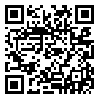Volume 32, Issue 1 (2024)
AIJH 2024, 32(1): 33-56 |
Back to browse issues page
Download citation:
BibTeX | RIS | EndNote | Medlars | ProCite | Reference Manager | RefWorks
Send citation to:



BibTeX | RIS | EndNote | Medlars | ProCite | Reference Manager | RefWorks
Send citation to:
Jan Ahmadi F, Rezaei A. Nadwa Ulama is a middle way between the two educational systems of Deobandia and Aligarh. AIJH 2024; 32 (1) :33-56
URL: http://aijh.modares.ac.ir/article-31-77204-en.html
URL: http://aijh.modares.ac.ir/article-31-77204-en.html
1- Department of History, Faculty of Literature and Humanities, Tarbiat Modares University, Tehran, Iran , janahmad2004@yahoo.com
2- Department of History, Faculty of Literature and Humanities, Tarbiat Modares University, Tehran, Iran
2- Department of History, Faculty of Literature and Humanities, Tarbiat Modares University, Tehran, Iran
Abstract: (13 Views)
The Nadwatul Ulama was founded in response to the intellectual and social crises faced by Muslims in colonial India during the 19th century. These crises stemmed from scientific and religious differences among Muslims, colonial domination, and the influence of Christian missionary propaganda. After the failure of the 1857 rebellion, the need arose to preserve the Muslim identity and promote intellectual progress. Two major movements emerged: the traditionalist Deobandi School and the modernist Aligarh movement. However, increasing differences between these schools left many Muslims confused and divided between tradition and modernity. In this context, Nadwatul Ulama was established as a third approach to reconcile the conflicting ideologies. Its founders aimed to create a balanced educational system that combined Islamic tradition with modern knowledge, bridging the gap between the Deobandi and Aligarh schools. The Nadwa movement rejected complete alignment with Western culture while also distancing itself from rigid traditionalism. This approach led to the development of thinkers who embodied a synthesis of these perspectives, establishing Nadwatul Ulama as a significant intellectual movement advocating a middle path for Islamic education.
Article Type: Original Research |
Subject:
Arts and Humanities (General)
Received: 2024/09/26 | Accepted: 2024/12/8 | Published: 2025/06/20
Received: 2024/09/26 | Accepted: 2024/12/8 | Published: 2025/06/20
Send email to the article author
| Rights and permissions | |
 |
This work is licensed under a Creative Commons Attribution-NonCommercial 4.0 International License. |








